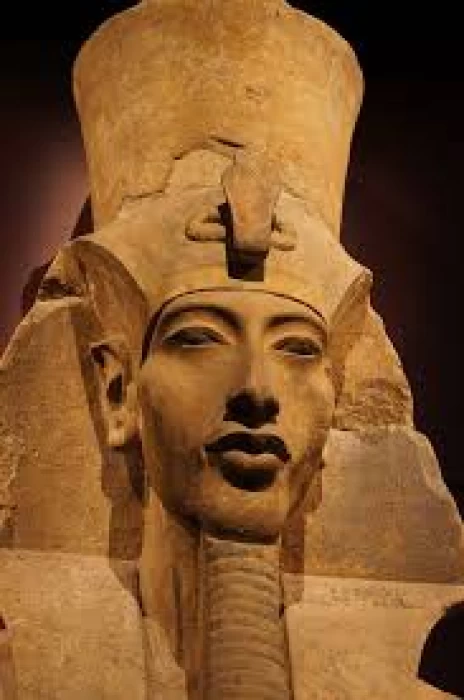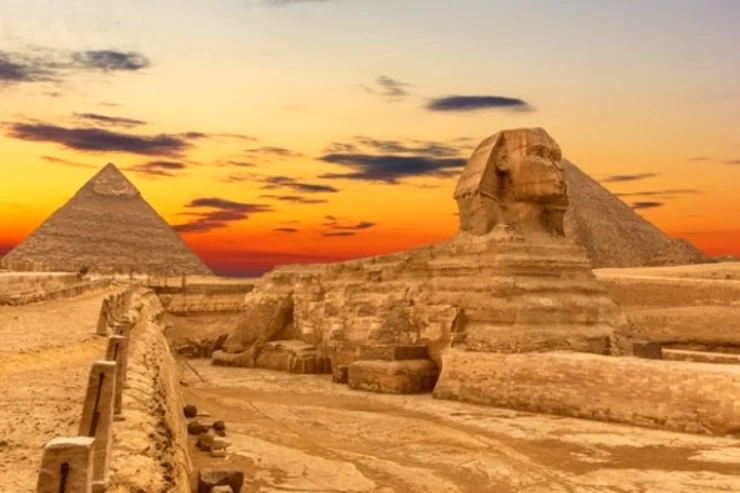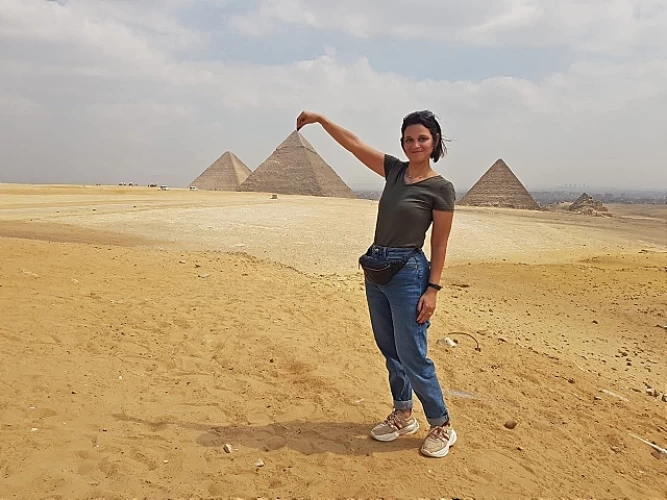
King Akhenaten | Amenhotep IV | Monotheism in Ancient Egypt
Details about King Akhenaten
King Ekhnaton, who managed the king with his father, Amenhotab IV, for more than nine years, is said to have twelve years, and then his father was to pay a price for his health and his youth for his sanctuary and his whims. When Akhnatun took the throne of the country, he found things a bit ready to worship the Sun God alone, symbolizing him with her puck, which he called "Aton", and saying of his idol: "It is the power behind this disc, and it is one that has no partner," he initially built a temple for him in Taiba, the capital of the King.
That did not anger the priests of Amun Ra, because their idol Amun Ra also represents the God of the Sun, but which I keep them insisting on the worship of his God alone and the prohibition of the worship of Amun and other gods. He succeeded in spreading his doctrine throughout the country and in eliminating other doctrines without much trouble ", indicating that the minds were ready to accept it, and that the Pharaohs had holiness.
Akhnatun built his new capital, "Sisters", at speed, and the first houses of state greats and courtiers were in a luxurious healthy style, He has fulfilled the amenities and luxury, and each employee has inscribed his name and titles on the front of his house beside the prayer of the god "Aton", After settling down, the makers gradually flocked to the new capital, taking their homes in the backward space between the homes of the senior employees.
In this town, the Minors are inhabited by the Minister next to the vile cottage where the small maker shelters. They called the Minister's Street, the priest's street and so on. Akhnatun ruled for 17 years, worsening the country's conditions economically, politically and militarily, because he was interested only in spreading his new concept of divinity, bumping into the culture inherited from the decades of religious conflict, and in the plots of priests, causing the loss of many of Egypt's kingdoms, and allowing guardians in far distant encyclopedia.
Ekhenaton had only a little after reigning for eighteen quarters, and he did not know whether the nose had died on his bedding or that he had been assassinated by conspirators after being overlooked by the eye of care that had been guarded, and he had left after establishing a strong religious policy, and having made successful strides in the faith.
Latest Articles
Admin
Aswan Governerate in Egypt
One of Egypt's southern governorates is Aswan Governorate. The city of Aswan serves as its capital. At a latitude of 22 north of the equator (also known as the Tropic of Cancer), it is bounded to the north by the Qena Governorate, to the east by the Red Sea Governorate, to the west by the New Valley Governorate, and to the south by the Republic of Sudan.
Admin
Luxor Governorate Egypt
The capital of the Arab Republic of Egypt is Luxor City, which was once known as "Thebes City" because it served as Egypt's capital during the Pharaonic era. It is situated in the South Upper Egypt region, approximately 670 kilometers from the capital Cairo from the south. It is bordered on the north by Qena Governorate, on the south by Aswan Governorate, on the east by Red Sea Governorate, and on the west by New Valley Governorate.
Admin
History of kafr El Sheikh Governorate
Kafr El Sheikh Governorate is an Egyptian governorate, located in the northernmost part of Egypt in the Nile Delta, with Kafr El Sheikh as its capital. It had a population of 3,172,753 in 2015 and an area of 3,748 km². Its entire area is located north of the delta and overlooks the Mediterranean Sea. The main economic activity of the residents of the governorate is agriculture and fishing, especially the southern lands of the governorate and the lands overlooking the Nile River - Rosetta Branch.
Admin
Egypt's New Administrative Capital
The New Administrative Capital is located between the Cairo-Suez and Cairo-Ain Sokhna roads, 60 km from Cairo and the same distance from Ain Sokhna and Suez. The New Administrative Capital is located on the border of Badr City, in the area between the Cairo-Suez and Cairo-Ain Sokhna roads, just after New Cairo, Mostakbal City and Madinaty.
Admin
Al Gharbia Governorate
Gharbia Governorate is one of the governorates full of archaeological sites, whether they are places or facilities (mosques, churches), as the governorate is a destination for visitors to these places throughout the year, whether they are Egyptians from the different governorates.
Admin
Hamata Islands (Qulaan Archipelago) in Marsa Alam
The Hamata area, south of Marsa Alam in the Red Sea, is one of the most important parts of the Wadi El Gemal Reserve, whether in the desert or the sea. It was named after the sorrel plant, which was distorted to Hamata.











-webp.webp)
-webp.webp)







